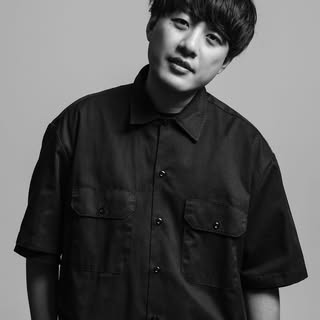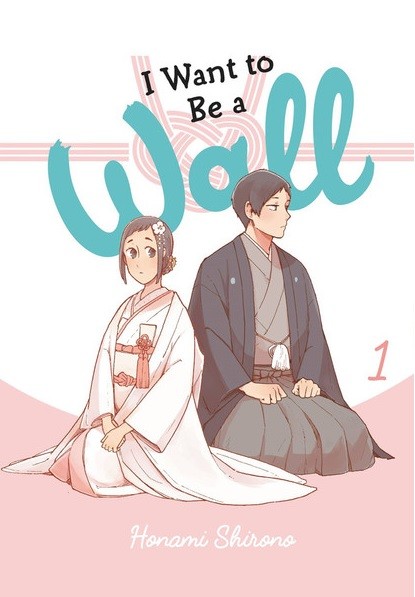What Does X-Gender Mean in Japan?

X-jenda, which comes from the use of X as a crossed meaning refusing to answer, and “gender” borrowed from English, is an umbrella term used in Japanese to designate a person whose gender identity falls outside of the binary. It is somewhat the equivalent of “non-binary” in the West.
It has five subgroups known within the community, but way less beyond:
Ryousei
Meaning “both genders”, for people who identify with both genders (Western equivalent: bigender)
“Chuusei”
Meaning “gender in-between”, for people who identify to something beyond or between the binary (Western equivalent: third-gender or gender-neutral, though those words aren’t so used anymore; genderqueer, albeit less defined, is more common)
- Note: this nomenclature also includes intersex people.
“Musei”
Meaning “gender-free”, for people who identify with no gender (Western equivalent: agender)
"Futei-sei”
Meaning “varying gender”, for those who identify with different genders at different times (Western equivalent: genderfluid)
“Other”
For people who are questioning, or reject the idea of gender completely
If you want to learn more about the varied sexualities and gender identities, check out our article about the meaning of Pride flags!
Origin of X-Gender in Japan

Although no specific origin can be pin-pointed for the concept of X-gender, it was born in Kansai, Central Japan, within the Osaka and Kyoto LGBTQ+ communities.
By the end of the 1990s, the word had appeared in several gay-targeted publications, such as Poco a Poco by the Kansai organization G-Front, and a few independent documentaries about transgender culture in Japan.
Afterwards, it spread throughout Japan, and is now better known in Tokyo and other big cities. Social media has been a great help for this purpose.
Non-Binary and X-Gender Recognition in Japan

Removing gender markers from forms
The first step that is actively being taken is the removal of the gender marker on some legal forms. This was pleaded, in part, by the NPO Rainbow Action, who got lesbian politician and former Diet member Otsuji Kanako to sign their petition in 2013.
Check out our list of LGBTQ+-friendly Japanese politicians!
Examples of this process being successful include the gender marker being successfully removed from 233 official documents in Shizuoka prefecture. This accounts for about 30% of the total number of documents (capable for review, which were 732 out of 1081) that the prefecture had dealt that year.
The Digital Agency is also currently considering removing the gender marker on the new My Number card, which will be introduced in 2026. This would be a huge step, as this document serves as a legal ID for a number of procedures, which would in turn likely let go of the gender marker.
Recognizing X-gender relationships
Another important document that removed the gender marker, was the legal partnership document of Yokosuka City. Not only that, it clearly states that X-gender people can apply. This is paving the way for not only same-sex partnerships, but partnerships where gender does not matter. X+F, X+M, X+X… This is an extremely hopeful step forward.
Still a long way to go
If we can see that the government is not completely deaf to their pleas, there is still a lot that can be done for X-gender people. For example, the development of an X gender marker in legal documents, which already exists in nine other countries.
Their unions should also be accepted in a much more widespread manner, and there should be efforts to improve their access to jobs, housing, and specialized healthcare.
Notable X-Gender Individuals in Japan
Yuhki Kamatani

Yuhki Kamatani is a mangaka, best known for Our Dreams at Dusk, Nabari no Ou, or Shonen Note, identifies as asexual and X-gender. They note their gender as “toX”, concealing their gender assigned at birth. A lot of their works deal with gender exploration.
Check out our list of the best LGBTQ+ mangas!
Yuu Watase

Yuu Watase is also a mangaka, best known for Alice 19th, Fushigi Yûgi, and Absolute Boyfriend. She identifies as X-gender, but still uses she/her pronouns in English.
Nakaken

Nakaken is a YouTuber and activist. They identify as X-gender and asexual. In their various YouTube channels as well as appearances at events, they want to bring awareness to the issues that sexual and gender minorities face in Japan, and educate people about LGBTQ+.
Shiki Aoki

Shiki Aoki is an actor, voice actor, model, and fashion designer, best known for playing the character of Asuka Ninomiya in IDOLM@STER. They are X-gender, identifying as androgynous, and pansexual. Since childhood, they have been playing characters of all genders. They use “boku” and “jibun” as pronouns.
Popular X-Gender Characters in Manga or Anime
Kino - Kino's Journey
The titular character of Kino’s Journey, Kino, is X-gender. It is never said that way, but they have issues with being called “bouya” or “ojou-san”. It is known that they were assigned female at birth, but their design, demeanor, and way to call themself “boku” indicate that they are X-gender (possibly on the agender spectrum). In this anime, it is a non-issue, simply a fact. It is refreshing to see such a design for an X-gender character, who are often portrayed as exuberant, and, often, more feminine.
Najimi Osana - Komi Can't Communicate
Najimi Osana was assigned male at birth, but identifies as X-gender. They have a rather feminine appearance, with fluffy purple hair, but wear outfits that range from a maid apron to a man’s suit. Najimi’s gender is something that is discussed in the anime, especially the support tinted with incomprehension of their friends. Najimi can be considered a genderfluid character.
Ryuji Ayukawa (Yuka) - Blue Period
Yuka is an X-gender character assigned male at birth, but with a feminine appearance. They are one of the most in-depth written X-gender characters, especially when it comes to their relationships, whether it be friendship or love.
Check out our list of the best LGBTQ+ anime!
Do I Have To Be Japanese To Identify As X-Gender?
People in Japan often refer to their sex when explaining their gender; starting from FtM (female to male) and MtF (male to female), which are a lot more used in Japan than “transgender male” or “transgender female”, is how MtX (male to X), FtX (female to X), and XtX (intersex to X) were born. There is little difference socially between sex and gender, and, unlike in Western society, one’s sex does not have to be a secret.
Therefore, while you may have to explain what X-gender means, if you feel like your sex is just as important in the designation of your gender, I would say that you can use this term for yourself. It is a very interesting approach to gender as a part of sex, after all. With that being said, keep in mind that X-gender is a result of a long introspection and ongoing fights for equality in Japan; therefore, be careful if you want to borrow this word! It’s not just a “do not want to reply” option.
LGBTQ+ Rights in Japan
LGBTQ+ rights in Japan still have a long way to go. If legal unions between same-sex partners do exist in some cities, there are still issues for adoption, housing, or even healthcare. Transgender individuals do have access to hormone replacement therapy and surgeries, it is still extremely difficult to change one’s legal gender.
If you want to learn more about the state of LGBTQ+ rights in Japan, check out our article!
Conclusion
X-gender is a unique approach to gender that the central Japanese LGBTQ+ community has developed to designate identities outside of the binary. Comprising many encompassing subgroups, it is even more organized and defined than non-binary identities are in the West.
Many people who feel gender incongruence might not know that they are X-gender, because only binary ideas of transidentity are known in Japan. It is thought that 1 in 13 people in Japan may feel gender incongruence, but very few have acted on it or even defined it.
Given the state of “simpler” LGBTQ+ issues in Japan, it seems like it will take a while before X-gender is properly recognized in Japan, but some efforts have proven fruitful. In the meantime, it is hopeful to think that the nomenclature of X-gender can spread better and help those feeling gender incongruence.










